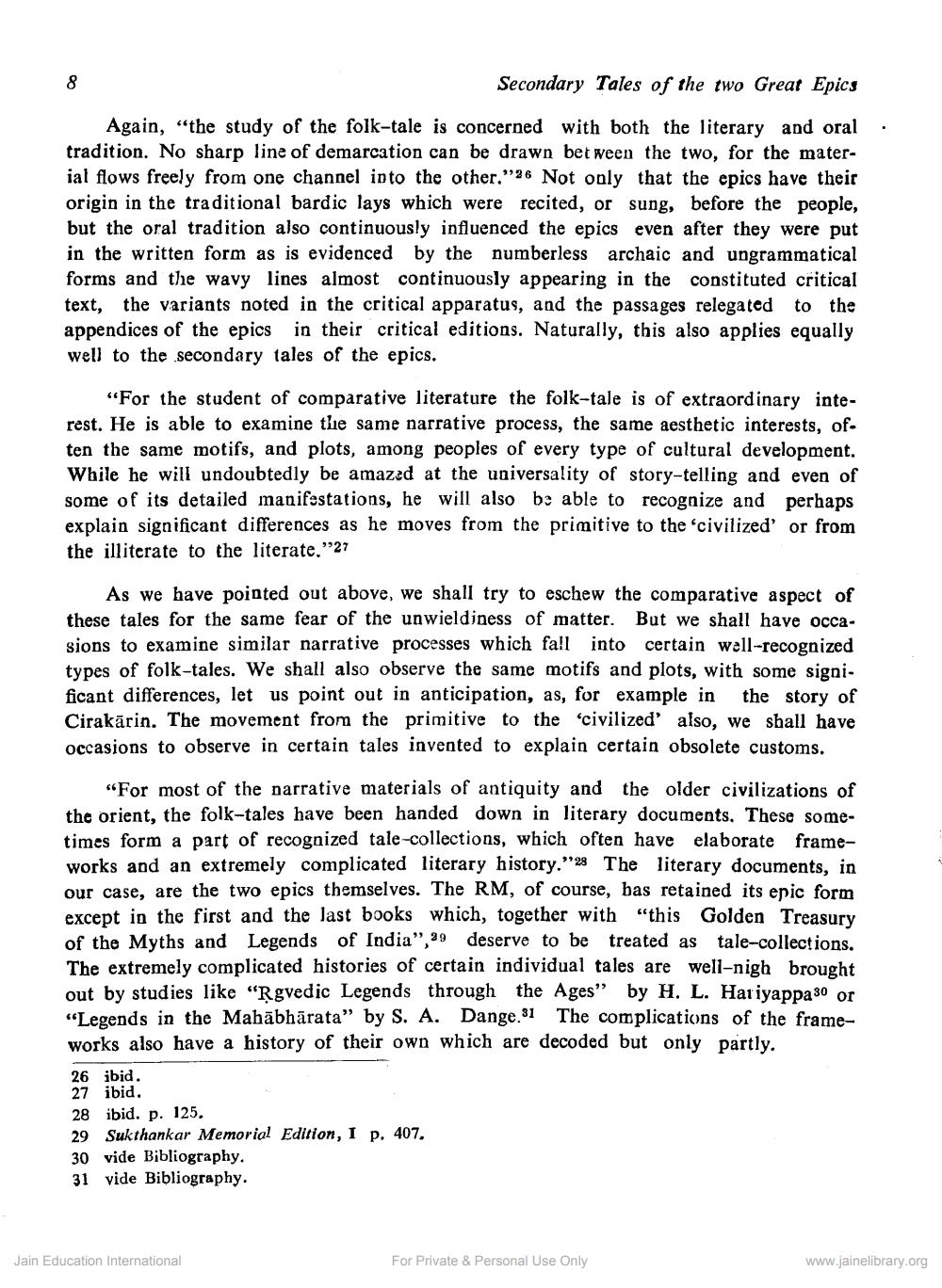________________
Secondary Tales of the two Great Epics
Again, “the study of the folk-tale is concerned with both the literary and oral : tradition. No sharp line of demarcation can be drawn between the two, for the material flows freely from one channel into the other."26 Not only that the epics have their origin in the traditional bardic lays which were recited, or sung, before the people, but the oral tradition also continuously influenced the epics even after they were put in the written form as is evidenced by the numberless archaic and ungrammatical forms and the wavy lines almost continuously appearing in the constituted critical text, the variants noted in the critical apparatus, and the passages relegated to the appendices of the epics in their critical editions. Naturally, this also applies equally well to the secondary tales of the epics.
“For the student of comparative literature the folk-tale is of extraordinary interest. He is able to examine the same narrative process, the same aesthetic interests, of. ten the same motifs, and plots, among peoples of every type of cultural development. While he will undoubtedly be amazed at the universality of story-telling and even of some of its detailed manifestations, he will also be able to recognize and perhaps explain significant differences as he moves from the primitive to the civilized' or from the illiterate to the literate."27
As we have pointed out above, we shall try to eschew the comparative aspect of these tales for the same fear of the unwieldiness of matter. But we shall have occasions to examine similar narrative processes which fall into certain wall-recognized types of folk-tales. We shall also observe the same motifs and plots, with some significant differences, let us point out in anticipation, as, for example in the story of Cirakārin. The movement from the primitive to the 'civilized' also, we shall have occasions to observe in certain tales invented to explain certain obsolete customs.
"For most of the narrative materials of antiquity and the older civilizations of the orient, the folk-tales have been handed down in literary documents. These sometimes form a part of recognized tale-collections, which often have elaborate frameworks and an extremely complicated literary history."28 The literary documents, in our case, are the two epics themselves. The RM, of course, bas retained its epic form except in the first and the last books which, together with "this Golden Treasury of the Myths and Legends of India", 29 deserve to be treated as tale-collections. The extremely complicated histories of certain individual tales are well-nigh brought out by studies like "Rgvedic Legends through the Ages" by H. L. Hariyappa 30 or "Legends in the Mahābhārata" by S. A. Dange.81 The complications of the frameworks also have a history of their own which are decoded but only partly.
26 ibid. 27 ibid. 28 ibid. p. 125. 29 Sukthankar Memorial Edition, I p. 407. 30 vide Bibliography. 31 vide Bibliography.
Jain Education International
For Private & Personal Use Only
www.jainelibrary.org




